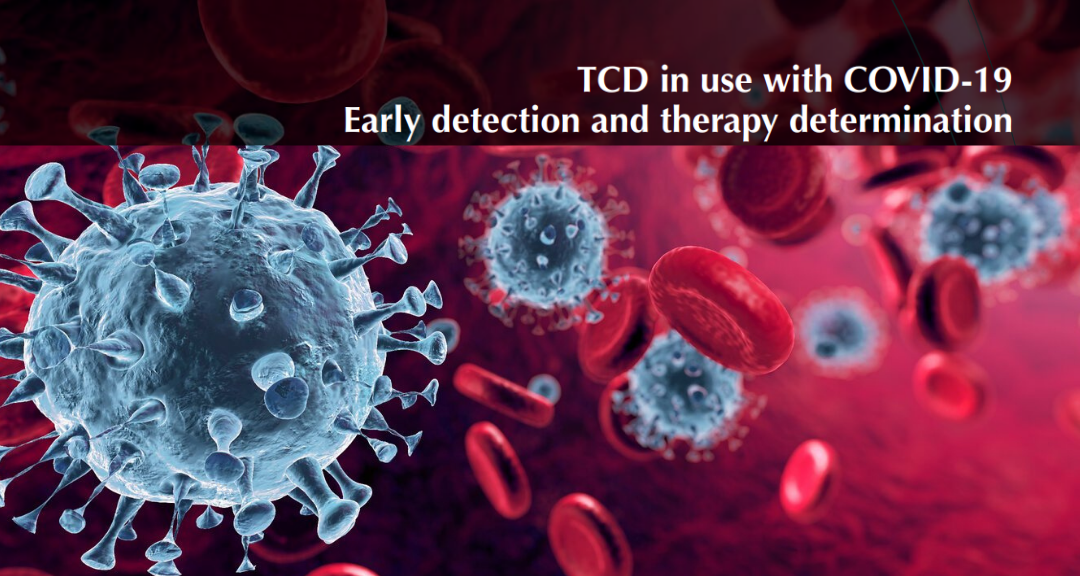
01 Jan. 2022 TCD in use with COVID-19
COVID-19 infection can be particularly dangerous in patients whose vascular function is already impaired by pre-existing conditions. This explains the typical clinical picture by causing circulatory disorders in the heart, as well as pulmonary embolism and vascular occlusions.
Research results say: COVID-19 is a systemic vascular disease
Currently multiple research results describe COVID-19 as less of a lung disease and more of a systemic vascular disease that may lead to strokes.
The research question of whether a SARS-CoV-2 infection is a systematic vascular disease is based on the fact that – despite aggressive incubation to save infected patients – there were high death rates. Research studies were able to prove the hypothesis that COVID-19 can affect not only the lungs but also the vessels of all organs. Accordingly, the coronavirus affects not only the respiratory tract, but also the neurovascular unit, which supplies vital organs – the brain, kidneys and lungs.
SARS-CoV-2 infection can be particularly dangerous in patients whose vascular function is already impaired by pre-existing conditions. This explains the typical clinical picture in which circulatory disorders in the heart, as well as pulmonary embolism and vascular occlusions in the brain and kidneys could result. These can eventually lead to fatal multi-organ failure.
For the researchers, this has consequences for the decision on treatment and therapy of COVID-19 patients.
Research results say: COVID-19 promotes the development of strokes
In a first study from Wuhan1, 40 out of 88 patients with severe COVID-19 progression showed neurological symptoms. Five of them alone had suffered a stroke. This raised the research question of whether a stroke is a direct result of the severe SARS CoV-2 infection or the result of the fact that patients with severe COVID-19 progression are also cerebrovascular risk patients at
the same time.
The scientists emphasize that it is mainly multi morbid patients with cardiovascular risk factors such as high blood pressure, high blood lipids (Hypercholesterolaemia), high blood sugar levels (Diabetes mellitus) and patent foramen ovale (PFO) who are seriously affected by COVID-19. The higher stroke rate could therefore be due to a selection bias and not a direct consequence of infection.
Research results say: COVID-19 causes vascular inflammation, heart attack, stroke
COVID-19 leads to vasculitis and the arterial walls are inflamed, then the oxygen in the blood could not be released into the tissue and the patient „suffocates“ anyway, even if the blood has been oxygenated with a ventilator.
Furthermore, even in the acute phase of COVID-19, the insufficient blood supply to the cardiovascular system can lead to a heart attack or the poor blood supply to the arteries supplying the brain to a stroke.
